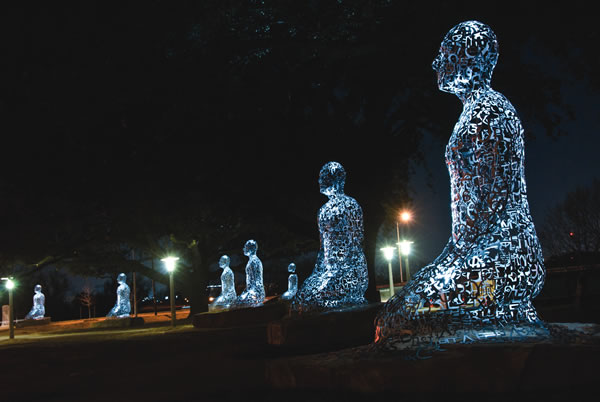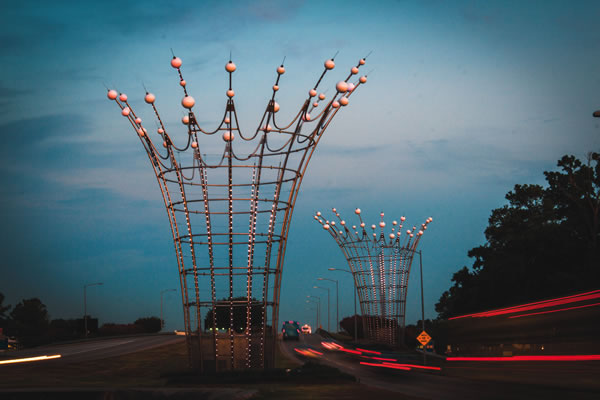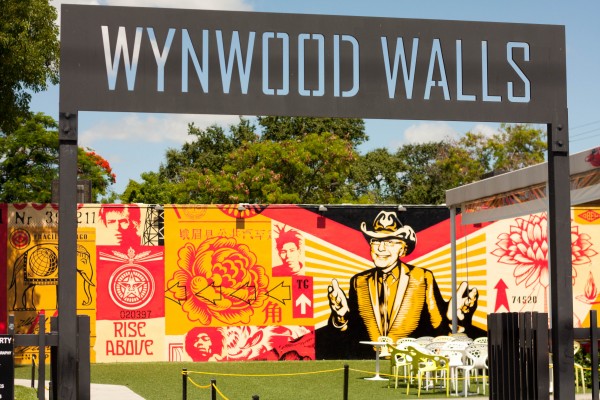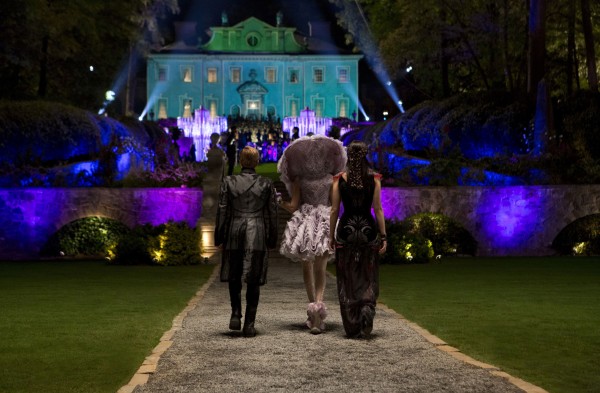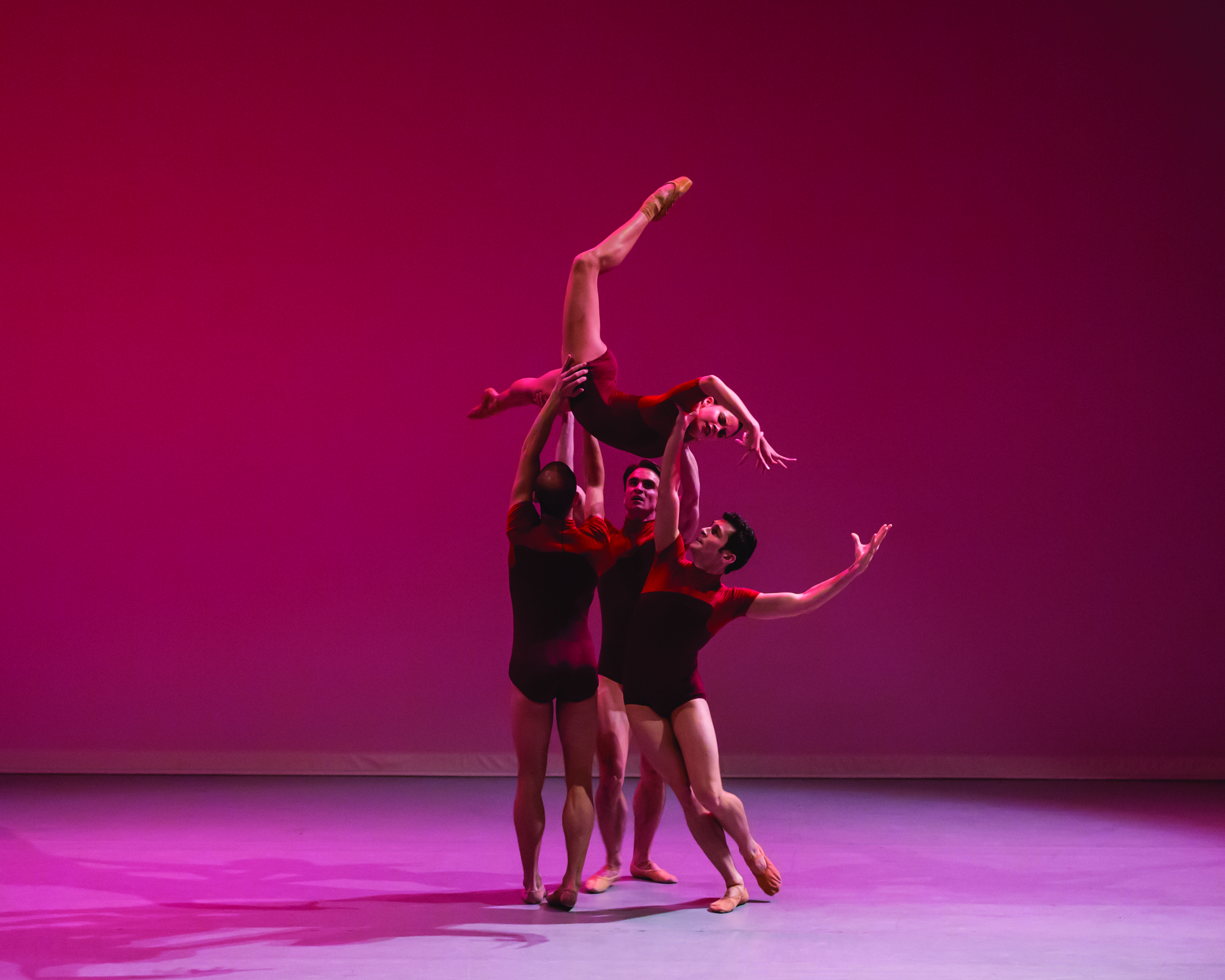Dynamic civic art around Houston invites interaction, provokes thought and adds whimsy for residents and visitors alike.- By Cynthia Lescalleet
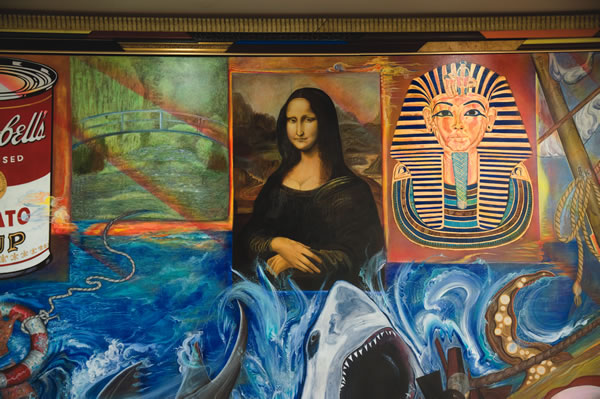 Houston’s dynamic public art scene can be a traveler’s first—and last—impression of the city. Monolithic “gateway” pieces, for instance, on the grounds of both of the city’s airports command notice, even while in the air.
Houston’s dynamic public art scene can be a traveler’s first—and last—impression of the city. Monolithic “gateway” pieces, for instance, on the grounds of both of the city’s airports command notice, even while in the air.
Dennis Oppenheim’s eye-popping “Radiant Fountains” at George Bush Intercontinental Airport and head-turning “Take-off” by Carter Ernst and Paul Kittelson at William P. Hobby Airport are harbingers of a 450-piece civic art collection thoughtfully sited to enliven public spaces citywide.
“Our public spaces are meant to be pleasurable, confrontational, engaging and stimulating. Civic art is one way we do this,” says Matthew Lennon, who as director of civic art and design for Houston Arts Alliance (HAA) is the city collection’s curator. Formed in 2006, HAA defines its role as “a catalyst, conduit, partner and advocate” for Houston’s arts community. HAA manages the ever-growing civic art collection, including commissions, acquisitions and conservation, and distributes grants to artists and arts nonprofits.
City ID in 3-D
Thematically, many pieces within the collection interpret the city’s identity, suggests HAA CEO Jonathon Glus. Installations might commemorate historic events, honor pivotal individuals or mark notable locations. Some pieces explore more esoteric themes drawn from the city’s traits and outlook. Still others are personal expressions by artists sharing their notions of “community.”
“Pieces in Houston’s public spaces embody a city that is still evolving, and because of that, both the city and its arts are tremendously dynamic,” Glus says. “We have sprawl, as most newer cities do. But with that, we have tremendous space, much of it still unaltered. This very large, meandering city provides us a wholly unique platform of vast bayous and green spaces—really unparalleled in other American cities—to build out with extraordinary art that could not be accommodated in other cities.”
Take Houston’s distinctive skyline and landscape, for example, which has made the city the perfect canvas for public art. “Houston has very significant public art by emerging, established and renowned artists from around the world as well as right here,” says Pam Ingersoll, art curator for the Houston Airport System. “Each piece is an endearment to the environment in which it exists.”
Over the past 20 years, collaborative efforts have built momentum of support and interest in public art here, with a real blossoming in the past five years, observes Ingersoll, a long-term supporter of public art.
“Many Houstonians have worked and sacrificed to make public art a significant part of Houston’s culture,” she says. “With the addition of a percent-for-art program ordinance, the city of Houston and the Houston Arts Alliance together have made important strides in adding outstanding new artworks to the city’s collection as well as preserve the present collection with conservation treatments.
“The arts in Houston have become economically advantageous for the artists and culturally enriching for the city,” she adds.
Meanwhile, HAA’s Lennon portrays Houston’s public art philosophy: “It’s not about plopping down an object,” he says. “It should always be seen as an action that demonstrates that we are willing to take risk, embrace contemporary ideas, materials and technologies. It’s a celebration of our time and place. It’s a way of showing that we like a little complexity and mystery, that we like to show off a little and have some fun.”
HAA continues to strive expand opportunities for cultural partnerships and programs that further mark Houston “as a place that is supporting emerging ideas and artists, creating models for experimentation and sound place-making,” Lennon says. Several of the newer works illustrate that, he says, adding, “Houston has the opportunity to be in the forefront of the international cultural dialogue.”
Glus looks back over the past five years and notes the growth of public art throughout the city: The city of Houston collection expanded, Rice University’s program took off and University of Houston’s collection grew further.
“Considering the three collections together, they occupy many of the most well-trafficked and loved spaces in the city,” Lennon says. “Take a walk through the grounds of Rice University and walk through Hermann Park, for example. Downtown’s plazas and our airports are all home to extraordinary and inspiring artworks of our age. It’s really quite something, what has happened here.”
Look out for these civic art pieces around the cit
“Radiant Fountains” by international artist Dennis Oppenheim rises as three 65-foot towers along JFK Boulevard at Bush Intercontinental Airport. Its rib-like arcs of stainless steel are capped by spheres bursting from a central point, like splashing droplets of water. At night, an interplay of colored light against the sky animates the towers.
“Houston Bayou” by Houston artist Dixie Friend Gay captures the local terrain in a 73-foot serpentine mosaic mural of 1.5 million Byzantine glass tiles, plus flooring and five 12-foot towers located in the ground-level passageway at Bush Intercontinental Airport between Terminals A and B.
“Houston, Can You Hear Me?” by Hana Hillerova, a new-to-Texas artist with roots in Prague, picks up on the city’s Space Age legacy. Its aluminum “stars” of 2 to 8 feet in diameter hang above a moving sidewalk for a galaxy-travel experience at the Bush Intercontinental Airport.
“Take-off” by Carter Ernst and Paul Kittelson is a recent addition to Hobby Airport’s grounds. Constructed of industrial materials, it’s a 30-foot-wide open nest balanced on branches and held 20 feet above a subtropical garden.
“Vector HH” by Italian artist Luca Buvoli is another Hobby highlight. Suspended over the escalator leading to baggage claim, the zigzag of the sculpture conveys the contrails of an open-armed human in flight.
“Tolerance” by Latin American artist Jaume Plensa, located on “Harmony Walk” along Buffalo Bayou near downtown, observes the city’s international presence. Seven figures representing the world’s continents sit on their heels, as if in contemplation.
“Large Spindle Piece” by renowned British sculptor Henry Moore is an iconic work, one from an earlier point in Houston’s public art pursuits. The 12-foot cast bronze is part of a 1969 series by the artist and was donated to the city in 1979 for then-new Tranquility Park.
“Art/Life” by Bert Long Jr., a self-taught Houston artist with an international reputation, is a churning, vivid and tremendously personal 30-by-7-foot painted mural in the children’s area of Looscan Library, a neighborhood branch of Houston Public Library. It weaves the artist’s own story into the imagery, which draws from 17 art masterpieces, parables of terror and beauty, and other concepts Long gleaned from his own library learning.


